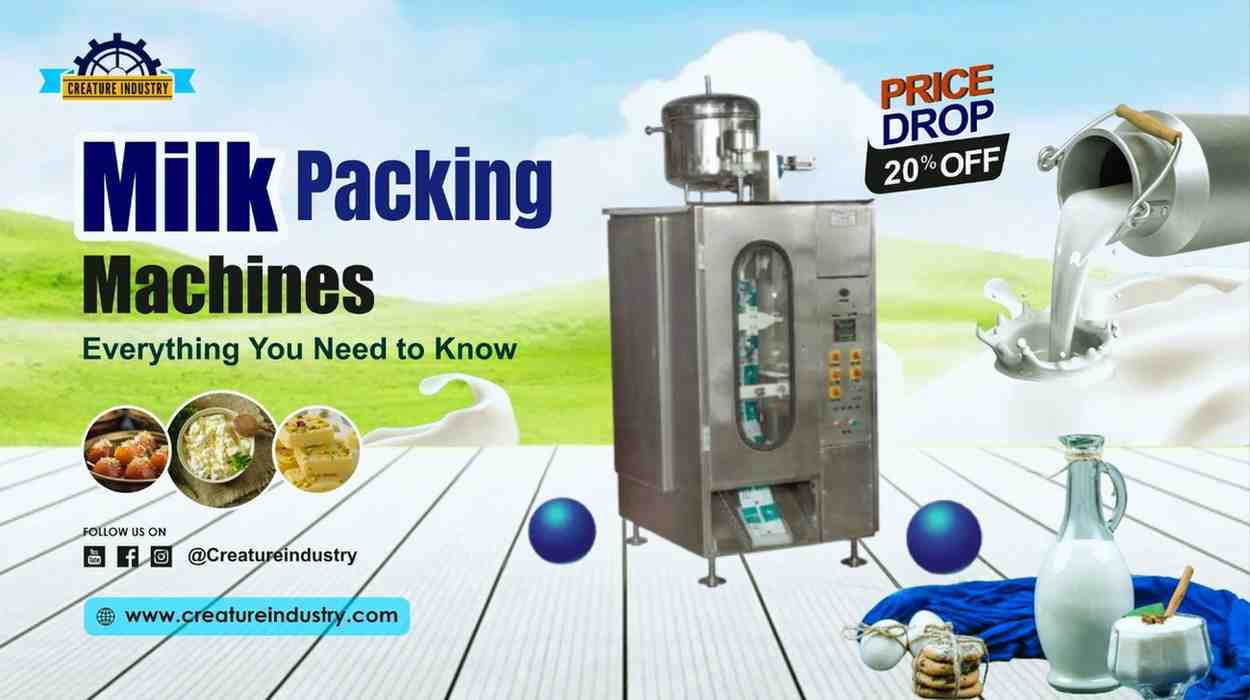


Find the perfect milk packing machine for efficient, hygienic, and fresh packaging. Boost your dairy business with the right solution today
In the ever-evolving dairy industry, the importance of efficient packaging cannot be understated. A milk packing machine is a pivotal component that ensures the quality and safety of milk products while enhancing operational efficiency. This article delves into the intricacies of milk packing machines, exploring their components, functionality, types, benefits, and future trends in technology.
A milk packing machine is designed to package milk products for retail sale or distribution. These machines are engineered to handle various types of milk, including fresh, flavored, and powdered milk, providing a versatile solution for dairy processors. The ability to adapt to different milk types not only enhances efficiency but also caters to the diverse preferences of consumers, making it an essential asset in the dairy industry.
Various components work together to ensure the functionality of a milk packing machine. The primary components include:
Filling System: Accurately measures and dispenses the milk into containers.
Sealing Mechanism: Ensures that each container is securely sealed to maintain freshness.
Control Panel: Provides operators with the ability to monitor and adjust machine settings.
Conveyors: Transport containers through the different stages of the packing process.
Labeling Unit: Automatically applies labels to finished products for branding and compliance.
Milk packing machines come in various configurations to accommodate the diverse needs of dairy processors. Understanding these types is essential for producers aiming to optimize their packaging operations.
Rotary milk packing machines are known for their high efficiency and speed. These machines operate by rotating multiple filling stations around a central axis, allowing for continuous operation and quick turnaround times. This type of machine is particularly beneficial for large-scale dairy operations that require high-volume packaging. Additionally, rotary machines often feature advanced automation systems that minimize human intervention, thereby reducing labor costs and the potential for errors during the packing process. The precision of these machines ensures that each package is filled to the exact volume, which is crucial for maintaining product consistency and meeting regulatory standards.
These machines are specifically designed to package milk in cartons, which are popular due to their lightweight and recyclable material. Carton milk packing machines can handle various carton sizes and shapes, offering flexibility in product offerings. They also usually incorporate aseptic filling technology to ensure longer shelf life without refrigeration. This technology is particularly advantageous for producers looking to expand their market reach, as it allows for distribution in regions with limited refrigeration infrastructure. Furthermore, carton packaging often features eye-catching graphics and branding opportunities, which can enhance product visibility and appeal to consumers in a competitive marketplace.
Pouch milk packing machines are gaining popularity due to their convenience and portability. These machines fill milk into flexible pouches, which can easily be transported and stored. The lightweight nature of pouches also reduces shipping costs, making them an attractive option for dairy producers. Moreover, pouch packaging is often equipped with resealable features, allowing consumers to enjoy milk in smaller portions without the risk of spoilage. This aspect not only caters to the growing trend of on-the-go consumption but also aligns with sustainability efforts, as pouches typically use less material than traditional containers. As consumer preferences shift towards more sustainable and convenient options, pouch milk packing machines are likely to become an increasingly vital component of dairy packaging strategies.
